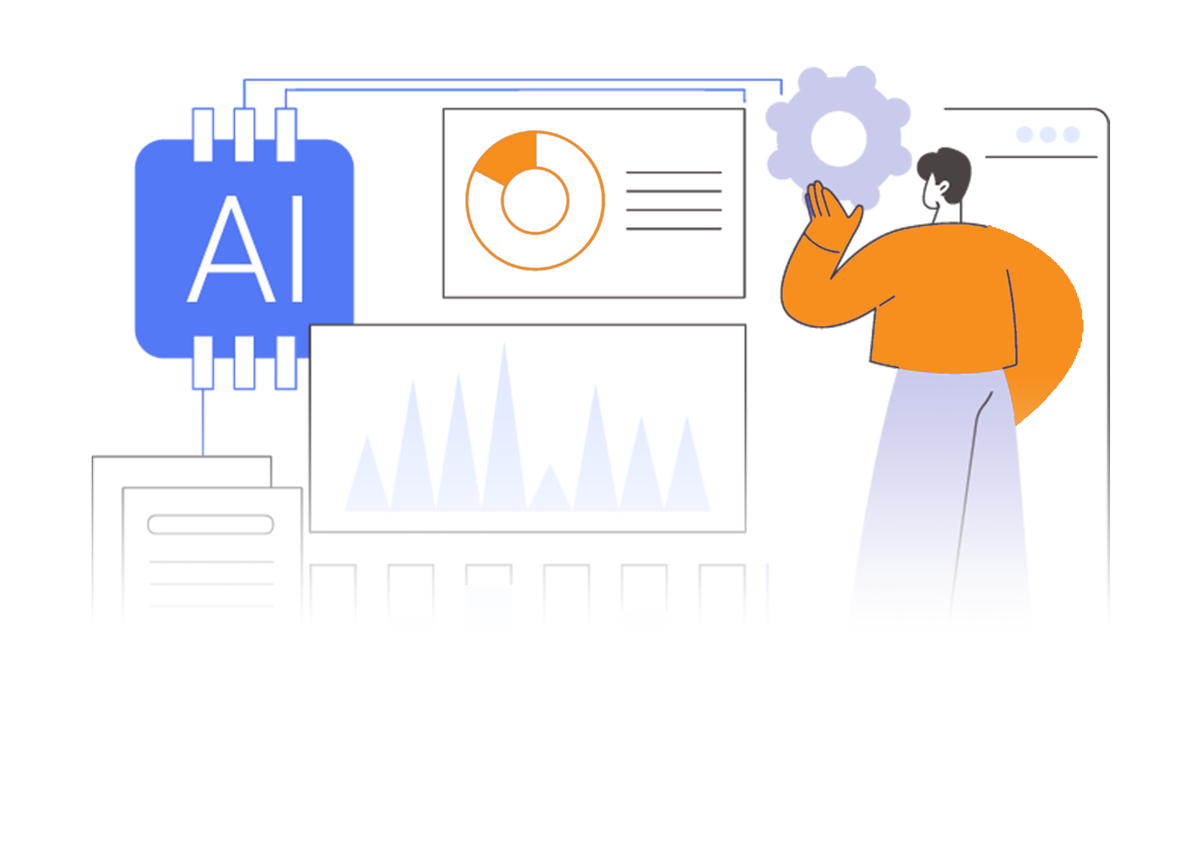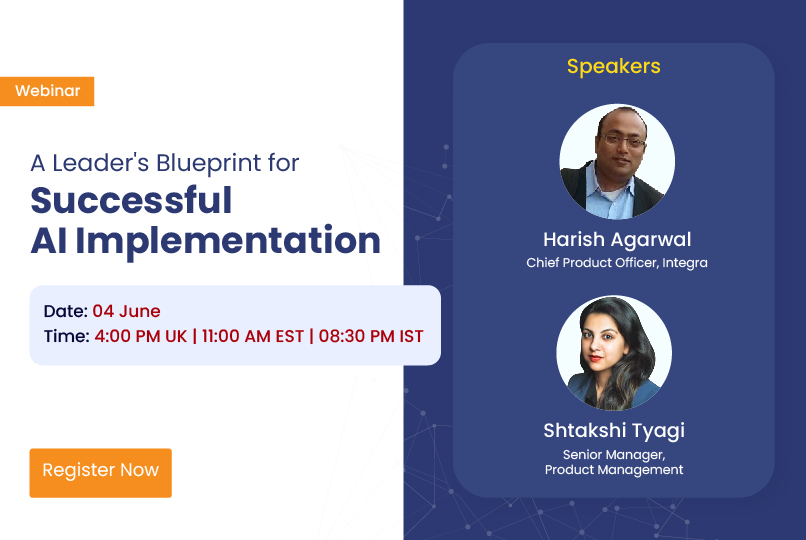Author: Nikhil. Mahamuni
Blueprint for AI Success: Step-by-Step Guide to Implementation
Artificial Intelligence (AI) is transforming industries across the globe. Businesses are increasingly recognizing the potential of AI to streamline operations, enhance customer experiences, and gain competitive advantages. AI technologies offer solutions for tasks ranging from data analysis to customer service, making them highly valuable in today’s fast-paced business environment.
Why Businesses Are Embracing AI?
According to a 2023 report from McKinsey & Company, the expanding capabilities and adoption of AI technologies are projected to add between $2.6 trillion to $4.4 trillion annually to the global economy.
This staggering increase underscores the transformative impact AI is expected to have by 2030, driving approximately $13 trillion in additional global economic activity. As we move further into the decade, the ongoing advancements and integration of AI continue to enhance its economic contributions significantly.
Setting Clear Goals and Objectives for AI Implementation
Implementing AI effectively requires clear goal-setting and strategic alignment with business objectives to maximize benefits and avoid common pitfalls.
Key Considerations Before AI Implementation
- Problem Identification: Clearly define the business challenges AI is intended to solve to prevent resource wastage and ensure optimal results.
- Data Quality: Rely on high-quality data to drive accurate AI predictions and decisions, critical to business success.
- Technological Infrastructure: Assess whether existing infrastructure can support AI, considering computing power, data storage, and network needs.
- Ethical Concerns: Address ethical issues such as data privacy and algorithmic bias to maintain fairness and transparency.
Aligning AI with Business Objectives
- Value-Driven Areas: Identify sectors within the business where AI can enhance efficiency, customer experience, or innovation.
- Stakeholder Engagement: Include key stakeholders from different departments to align AI initiatives with organizational needs and secure widespread support.
- Strategic Integration: Focus on integrating AI solutions where they can directly support and enhance business objectives, ensuring relevant and significant outcomes.
Identifying Use Cases for AI
- Pain Point Analysis: Start by pinpointing current organizational challenges where AI could provide effective solutions.
- Example Solutions:
- Use AI-powered chatbots to improve customer service response times.
- Employ AI-driven knowledge discovery solutions for enterprises.
- Seek Innovation: Explore how AI can create new business opportunities or provide a competitive edge by identifying areas ripe for innovation.
These foundational elements are essential for crafting a successful AI integration strategy. This strategic approach guarantees that AI deployments are not only well-planned but also aligned with broader business goals, driving growth and innovation.
Crafting an AI Implementation Strategy
Crafting a well-defined AI implementation strategy is pivotal for the success of AI projects. This strategy should clearly define the scope and scale of the project, ensuring that it is manageable and aligned with the organization’s goals.
Defining the Scope and Scale of the Project:
- Outline Specific Goals: Clearly state the objectives of the AI project to maintain focus and direct all project activities toward delivering tangible value.
- Define Success: Set explicit success criteria to ensure the project outcomes align with business expectations.
- Consider Project Scale:
- Data Requirements: Evaluate the volume of data to be processed to confirm the infrastructure’s capacity.
- Solution Complexity: Assess the complexity of the AI solution to ensure sufficient technical and human resources.
- Balance Ambition with Feasibility: Ensure that the project’s ambitions are achievable within the constraints of available resources.
Developing a Timeline and Budget:
- Timeline Development:
- Outline Key Stages: Identify the main phases of the project, such as data preparation, model development, and testing.
- Assign Timeframes: Allocate realistic timeframes to each stage based on the complexity of the AI solution and resource availability.
- Budget Planning:
- Comprehensive Costing: Account for all costs related to technology, personnel, and infrastructure.
- Contingency Funds: Include a contingency budget to cover unforeseen costs or delays, ensuring financial stability.
Building the AI Implementation Team:
- Diverse Expertise: Assemble a team with diverse skills, including data science, software development, and business analysis, to address all project facets comprehensively.
- Skills and Experience: Identify the specific skills and experience required for the project, such as proficiency in AI technologies or data analysis.
- Collaborative Culture: Foster a team environment that encourages collaboration and knowledge sharing, essential for tackling complex challenges and keeping the project on track.
These structured steps provide a blueprint for navigating the complexities of AI implementation, ensuring the project is strategically aligned and well-equipped for success.
Preparing the Data and Infrastructure
For AI projects, the process of data collection and preparation is foundational, acting as the core that drives the effectiveness of AI solutions. Alongside this, establishing a robust infrastructure to support AI operations is equally vital.
Data Collection and Preparation:
- Collecting Data: Start by gathering relevant data from varied sources such as databases, sensors, or external providers, ensuring it directly relates to the problem the AI is meant to solve.
- Cleaning Data: Proceed to clean and process the data by removing errors, inconsistencies, and irrelevant entries to enhance its accuracy and suitability for analysis.
Infrastructure Requirements for AI:
- Assessing Needs: Determine the specific infrastructure needs of your AI solution, which might include high-performance GPUs for deep learning or scalable cloud services.
- Ensuring Reliability and Security: Build an infrastructure that is not only powerful but also secure and reliable. Implement strong data privacy measures and ensure the infrastructure can support the AI application consistently without failure.
By focusing on these areas, businesses can lay a solid foundation for successful AI implementation, ensuring both the data and the systems are optimally configured for high performance and security.
Developing and Testing the AI Solution
Selecting the right AI technologies and developing an effective AI model are critical steps toward successful AI implementation. These processes involve evaluating various factors to ensure the chosen technology and model align with the business’s needs and strategic goals.
Choosing the Right AI Technologies:
- Assess Needs: Determine the nature of the problem, the type of data involved, and the desired outcomes to guide the selection of AI technologies.
- Technology Options: Evaluate different AI technologies such as machine learning algorithms, deep learning frameworks, and natural language processing tools.
- Key Factors: Consider scalability, ease of use, and compatibility with existing systems to ensure seamless integration and effectiveness.

Developing the AI Model:
- Model Selection: Choose the appropriate algorithm or model architecture based on the type of data, desired outcomes, and available resources.
- Training: Train the model on a dataset to learn patterns and make predictions, tuning hyperparameters to optimize performance.
Testing and Validating the AI Solution:
- Validation Testing: Initially test the model on a validation dataset to check for accuracy and generalization, making necessary adjustments.
- Real-World Testing: Further test the model on a test dataset to evaluate its performance in real-world conditions and ensure readiness for deployment.
These structured steps are vital for ensuring that the AI technologies and models chosen are well-suited to the business’s specific requirements and can effectively address the intended problems.
Deploying and Monitoring the AI Solution
Deploying and monitoring an AI solution are crucial stages that determine the success of its integration into business operations. Proper execution ensures functionality and continuous improvement of the system.
Launching the AI Solution:
- Infrastructure Setup: Establish the necessary infrastructure and configure the system to support the AI solution.
- Phased Deployment: Plan the deployment carefully to minimize disruptions, potentially launching the solution in stages or running parallel systems to identify and address any issues swiftly.
- Training and Support: Provide comprehensive training and ongoing support to users, ensuring they are proficient in using the AI solution and can give feedback or report problems effectively.
Monitoring Performance and Making Adjustments:
- Continuous Monitoring: Regularly track key performance indicators (KPIs) to assess both technical performance (like accuracy and speed) and business impact (such as customer satisfaction and operational efficiency).
- Iterative Improvements: Use the insights gained from monitoring to make necessary adjustments, which could include retraining the model, adding new features, or modifying the system’s configuration to better meet evolving business needs.
These steps are vital for seamlessly integrating AI into business processes, ensuring it adds value and adapts to ongoing changes within the company.
AI Implementation for Long-Term Success
Implementing AI effectively requires a strategic blueprint that aligns with business goals, ensuring successful navigation through the complexities of adoption. This strategic foundation sets the stage for achieving impactful and enduring outcomes as AI systems integrate into core business processes.
The journey extends beyond initial deployment, evolving through continuous feedback, rigorous outcome analysis, and proactive future planning. These practices are crucial for AI solutions to remain relevant and adaptive, enabling businesses to harness the full potential of AI and drive sustained success in a dynamic digital environment.


